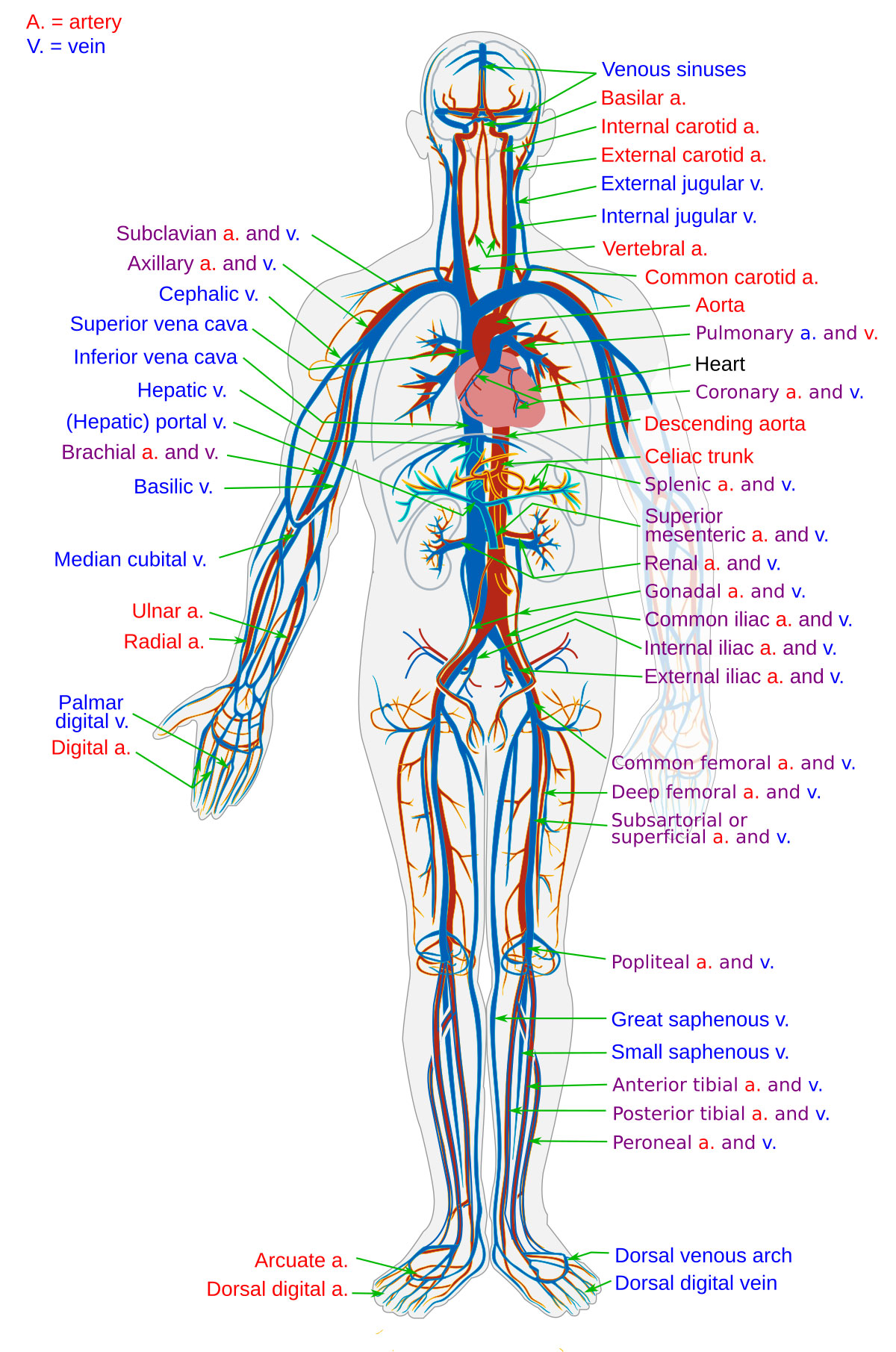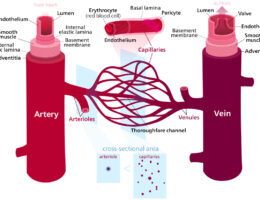Arteries and veins are types of blood vessels that are responsible for the transportation of blood throughout the body.
- Arteries: Arteries are thick-walled vessels that carry oxygenated blood away from the heart. They have a smaller lumen and thicker walls with more smooth muscle and elastic fibers than veins. This is because they need to withstand the high pressure and force of blood pumped out of the heart.
- Veins: Veins are thin-walled vessels that carry deoxygenated blood back to the heart. They have a larger lumen and thinner walls with less smooth muscle and elastic fibers than arteries. This is because they need to allow blood to flow back to the heart without a high level of pressure.
- Capillaries: Capillaries are the smallest blood vessels and are responsible for the exchange of oxygen, carbon dioxide, and nutrients between the blood and tissues. They have a thin, single-layered wall that allows for diffusion of molecules.
- Systemic circulation: This is the pathway of blood that supplies oxygen and nutrients to the body tissues and returns deoxygenated blood back to the heart. The systemic circulation starts at the left ventricle of the heart and ends at the right atrium of the heart.
- Pulmonary circulation: This is the pathway of blood that carries deoxygenated blood from the right ventricle of the heart to the lungs, where it picks up oxygen and releases carbon dioxide. Oxygenated blood then returns to the heart via the pulmonary veins and enters the left atrium.
- Arterioles: Arterioles are small branches of arteries that regulate blood flow to capillary beds in the body’s tissues. They are responsible for controlling blood pressure and the distribution of blood to various organs.
- Venules: Venules are small branches of veins that drain blood from the capillaries and connect to larger veins. They are responsible for transporting deoxygenated blood back to the heart.
- Aorta: The aorta is the largest artery in the body and originates from the left ventricle of the heart. It branches off into smaller arteries that supply oxygenated blood to the different parts of the body.
- Superior and Inferior Vena Cava: The superior and inferior vena cava are the largest veins in the body that carry deoxygenated blood from the upper and lower parts of the body back to the heart, respectively.



